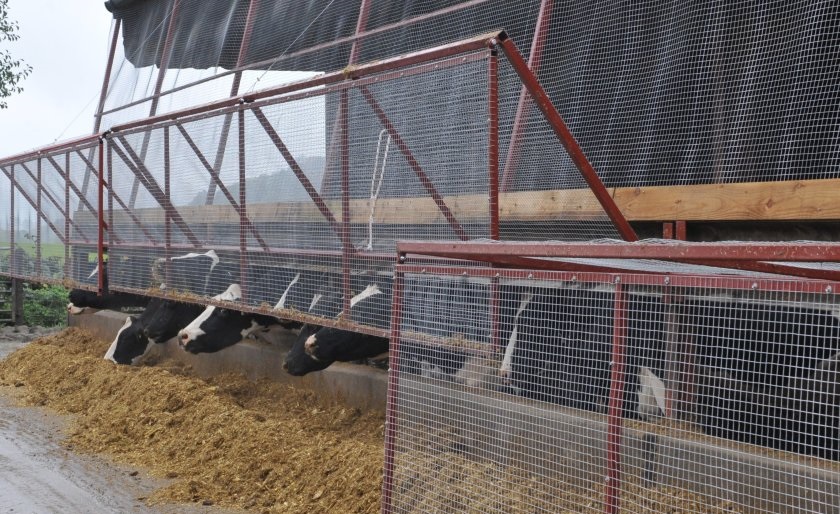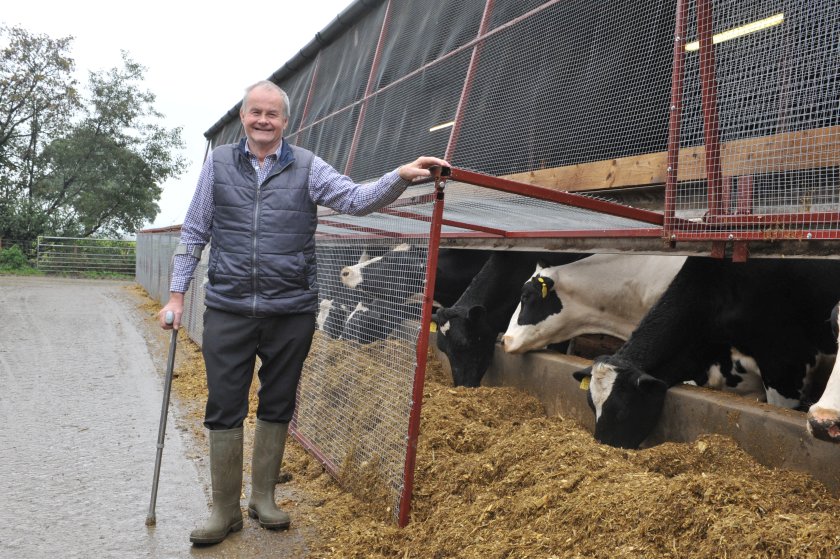
Investing £30,000 in starling-proofing cattle housing is a major outlay for a dairy farming business, but it calculates a payback period of just two months in feed savings alone.
In the months from October and March, Nantgoch Farm near Oswestry, Wales, is plagued by starlings foraging for maize and other grain in the total mixed ration fed to the 770-cow dairy herd.
The Jones family estimated that around 50,000 - 100,000 starlings were helping themselves to four tonnes of feed daily, at a cost of £15,000 a month.
There were also financial losses from reduced milk production – up to two litres per cow per day due to the lower energy density of the fed ration from predation, with negative effects on fertility as a consequence.
Bryn Jones told farmers attending a recent on-farm open event that the money spent so far on measures to deter starlings had been a very worthwhile investment.
“It is a lot of money to find and we still have another 20% of the buildings to do but it is the only way we can protect the feed and the cows from the infestation," he said.
Protecting feed passages on the outside of buildings had been one of the biggest challenges but it was achieved with cage-like canopies which can be raised off the passage when the feed wagon is depositing the ration and winched back into position when cattle are feeding.
One of the next hurdles is to protect the maize clamp during times when access is not needed. “It isn’t going to be easy but it is something we are going to have to do," said Mr Jones.
Graphs produced by the farm vet, Rob Edwards of Cain Vets, show dips in milk production during the months of peak infestation, with a potential 4.4% loss in energy corrected milk (ECM) during those months compared to the period when starlings have migrated.

However, other factors such as day length and a dip in maize silage quality later in the year can influence that too.
Mr Edwards also warned of the health risks from starlings as potential vectors of infectious diseases such as Salmonella Typhimurium.
Mitigating the risk of bovine TB spreading from badgers accessing feed is another priority at Nantgoch. There is currently a breakdown in the herd after six clear years.
Mr Edwards said use of cameras can be a good way to confirm the presence of badgers and also which parts of the farmyard they visit.
He recommended sheeting access gates with tin or board to a minimum height of 1.5m, no more than 7.5cm above the ground.
Keep areas that can be accessed by livestock free of pools of stagnant water as TB bacteria can live in this water for up to 12 months, Mr Edwards added.
The high yielders at Nantgoch are fully housed and what goes into their compact TMR ration, to produce the average annual yield of 12,530 litres from three times a day milking, is crucial to maintain performance and health.
Compact feeding has prevented sorting and helped with digestibility of the raw materials.
The ration is formulated by the farm’s nutritionist, Neil Blackburn, of Kite Consulting, incorporating 24kg maize silage and 15kg grass silage, both fresh weight quantities, 6.7kg bread, 2.5kg blend and 3kg 18% protein cake.
It also includes 0.5kg of sustainably-grown soya, and 8kg water, providing a total fresh weight intake of 62.2kg to produce 40 litres.
Around 2,800 litres of the annual yield come from forage, with 198ha of maize grown on the 445ha farm and grass silage produced from a five-cut system at an average of 11.2 MJ ME/Kg DM.
“Quality forage is absolutely critical in this type of system," said Mr Blackburn, "The general rule is to avoid change if the ration works."
A calcium binder is included in the transition cow ration after issues were experienced with colostrum quality and with clinical cases of milk fever.
At a cost of £0.70/cow/day for three weeks, or £3,400/tonne, Mr Jones admitted it was not a cheap option but said it is extremely effective and there is a saving on the cost of calcium boluses which are no longer needed. The plan is to move back to a DCAB system in time to reduce cost.
Good clamping protocols means no binder is currently needed to counteract mould and mycotoxins but Mr Blackburn recommends including in the ration where there have been problems; these cost around £0.06/cow/day.
“It is costly to test for the specific mycotoxins and there is such a range of them that my advice is to put a binder in and you will either see a result in milk response within 21 days or not, where it is needed it definitely does work.’’
